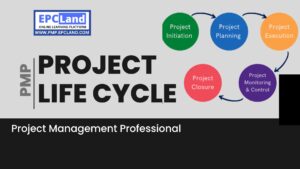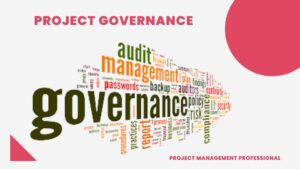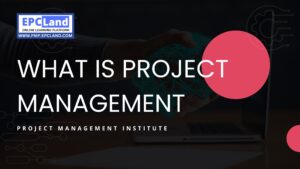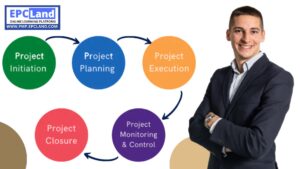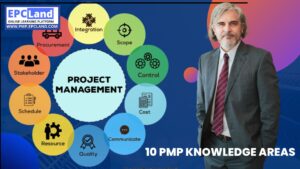Table of Contents
ToggleUnderstanding Stakeholders Definition
A project is a community effort. Even a manager must rely on, collaborate with, and report on others to make a project successful.
In this guide, we’ve talked a lot about the different people involved in project conception and execution. Your team, other departments in your organization, leadership, customers, etc.
These people are the project stakeholders. But what does that mean exactly? How do stakeholders influence the project? And what can you do to make her happy?
According to the Project Management Institute, a project stakeholder is defined as:
“Persons and organizations that are actively involved in the project or whose interests may be positively or negatively affected by the project’s implementation or success.”
In other words, a project stakeholder is a person or group that has something to gain (or lose) from the project’s outcome.
Additionally, the list of stakeholders may change over the course of the project.
For example, depending on the phase of the project, the influence of certain stakeholders may be more or less important.
As a project manager, your job is to keep all stakeholders informed, engaged, and engaged during the project’s progress. Stakeholder satisfaction is one of the most important indicators of project success. So getting the right buy-in and ticking the right box at the right time is key.
Ultimately, managing these complex stakeholder relationships is one of the project manager’s key competencies. But juggling so many different interests, perspectives, and personalities is no small feat. Here’s what you need to know about stakeholders:
Who are they, what do they do, why are they important, and how do you work with them?
Attempt-Quiz-1: Test your knowledge on Project Stakeholders

Time's up
Who are the project Stakeholders?
Now that you know the answer to the question, “What are the stakeholders?”, the obvious next question is, “Who are the stakeholders of the project?”
As seen in the stakeholder definition above, a stakeholder is someone who has an interest or investment in a project. But once you start sketching it out, you might be surprised at just how long the list can get.
This is because investments in projects can come in many forms. It could be company money, management sponsorship, or manager resources. It also applies to end users and customers, as their needs play an important role in managing a project.
Let’s take a closer look at some of the different types of stakeholders in the project.
Hence in Short,
Depending on the complexity and scope of the project, there may be very few or many participants. A project may be part of a city or county public building authority and may involve all members of the community as stakeholders and thousands. When determining what a stakeholder is, it is important to consider who may fall into one of these categories. On the way to identifying stakeholders, the need to analyze the context of the project and determine which persons or groups influence the project, influence it, or may be affected by its performance and results.
Types of stakeholders in project management
Project management has mainly his two types of stakeholders, internal and external.
Internal Stakeholders
These stakeholders come from home!!! Internal stakeholders are people or groups within your organization such as team members, managers, and executives. Majorly these can be listed out as:
- A sponsor
- An internal customer or client (if the project started due to an internal need of the organization)
- A project team
- A program or portfolio manager
- Management
- Another team’s manager of the company
External stakeholders
External stakeholders are, as you probably guessed, individuals or groups outside your organization. This includes customers, users, suppliers and investors.
As you can see, stakeholders don’t always work for project managers. Of course, this can add even more complexity as you have to communicate with people at different levels of the organization and with different levels of commitment, influence and interest.
Individual project stakeholders vary by project type and industry, but here are some examples of the types of project management stakeholders you should consider.
- An external customer or client (if the project started due to a contract from an external party)
- An end-user
- Subcontractors
- A supplier
- The government
- Local communities
- Media
Attempt Quiz-1 on Identify Stakeholder Process

Time's up
Stakeholders compared to key project stakeholders
In general, project stakeholders are individuals or entire organizations affected by the implementation or results of the project. It doesn’t matter if the project impacts them negatively or positively. If they are affected, they are stakeholders. Key project stakeholders, however, are those who have the influence and authority to determine the success of the project.
These are the individuals and groups who have the power to make or break the project and therefore must reach their goals. Even if all the results are achieved and the budget is achieved, the project cannot be called a success if the stakeholders are not satisfied.
Why are stakeholders important to a project?
- Stakeholders have different duties and powers when contributing to a project. This amount will vary depending on the revenue of the project. They range from occasional donations to funding entire projects.
- Some of them can also actively or passively reduce the success of a project. These stakeholders require the attention of the project manager throughout the project life cycle.
- Stakeholder identification is an ongoing process throughout the project life cycle. Identifying them, understanding their impact on the project, and meeting requirements, needs, and expectations is critical to project success.
- Projects can be perceived positively or negatively by stakeholders, just as they can have a positive or negative impact on project goals.
- One of the project manager’s most important tasks is managing stakeholder expectations. This can be a problem as stakeholders often have very different or conflicting goals.
Attempt-Quiz-2: Test your knowledge on Project Stakeholders

Time's up
Identification of stakeholders
Now you have answered the following questions:
What are stakeholders? And Who are the stakeholders?
These questions are also answered during the stakeholder identification process. Stakeholder identification is the process used to identify all stakeholders for a project. It is important to understand that not all stakeholders have the same impact or influence on the project, nor are they affected in the same way.
Ways to identify project stakeholders
It should be done in a methodical and logical manner so that stakeholders are not simply left behind. This can be done by looking at stakeholders organizationally, geographically, or through their involvement in various project phases and outcomes.
Another way to identify stakeholders is to identify who is directly affected by the project and who may be indirectly affected.
Examples of directly affected stakeholders are members of the project team or the customer for whom the project is being performed.
Indirectly affected stakeholders may include neighbouring organizations and community members.
Direct vs Indirect Stakeholders
Directly affected stakeholders usually have more influence and influence on the project than indirectly affected stakeholders. These details will continue to be developed and analyzed in the stakeholder analysis process, so it is important to consider them now and they will help provide a systematic way of identifying stakeholders.
Outcome of Stakeholder Identification:
Stakeholder identification should result in the project’s stakeholder registry. This is where the project team records the names, contact information, titles, organizations, and other relevant information for everyone involved. This is a necessary tool during stakeholder management and adds great value to project teams to communicate with stakeholders in an organized manner.
How to conduct a stakeholder analysis
Once the project outline is complete and the scope of the project is defined, stakeholder mapping can begin. Here’s how to get the ball rolling with a basic stakeholder analysis process.
- Identify stakeholders
The first step is to identify who your stakeholders really are. To do this, reference the project overview and all other project plans and documents to develop a complete list of internal and external project stakeholders. Remember that some stakeholders don’t get involved until later in the project lifecycle. But if you can predict who they’re going to be, you can get their buy-in, build relationships from the start, and build relationships from the start. You start to feel involved.
- Prioritize stakeholders
Once you have identified all your stakeholders, you can start prioritizing them.
Prioritizing your stakeholders is important because it helps you better understand where to invest your resources. This means that as a project manager, you can always identify key decision makers so you can be sure you’re talking to the right people at the right time. There are several ways to do this stakeholder prioritization, but one simple way is to represent it using a power/interest (or power/influence or influence/influence) grid.
The Power/Interest Grid helps identify key stakeholders by answering two key questions that help them fall into one of four categories.
What power do they have?:
How important is it that you are happy with the progress and results of the project? How important are they to the success of the project? To what extent do they influence the project, other stakeholders, the team, etc.? (Notice:
Stakeholder influence can be positive or negative!)
What are their interests:
Is this project very important to you, or are you relatively uninvolved? Is it their direct responsibility? Do they rely on it for other work or results? Are they against the project or are they concerned in some way?
As we can see from the (highly technologically-advanced) matrix above, stakeholders who fall into the top-right quadrant (powerful + interested) are the ones you should be giving extra attention to, because they’re the ones who can have the most impact on your project — for better or for worse.
Attempt Quiz-4 on Identify Stakeholder Process

Time's up
- Understand your stakeholders
Now that you know who the key players are and which ones to prioritize, you need to get a full grasp of their expectations for the project.
For key stakeholders, this might involve meeting up for a short face-to-face interview or conversation where you discuss things like:
- What their definition of project success looks like
- Any concerns or reservations they have about the project or its outcomes
- What their expectations for the project are
- What impact a positive or negative project outcome would have on them
- Whether there are any anticipated conflicts of interest with other stakeholders that you need to be aware of.
Not only will these conversations help you to understand each stakeholder’s involvement in, and outlook on, the project, but it also helps you to build a bigger picture of your stakeholder network and how each stakeholder interrelates.
And on a personal level, meeting with the key stakeholders at the beginning of the project helps you to feel out some basic interpersonal preferences (like communication style), as well as start building your relationships with each stakeholder. In doing so, it also helps to pay attention to political, cultural, or environmental cues whenever possible. Addressing an organization’s political climate, key stakeholder interactions, potential conflicts of interest, and more can help provide important context for project execution and foreseeing certain decisions. Also, it should cultivate the super power of the project manager. asap.
Stakeholder role
Stakeholders are important to an organization because they consist of everyone in the organization who has a need to provide the required services. Once she has clarified who her IT service stakeholders are, she can effectively define roles, supporting organization responsibilities, processes, and management of the interfaces between the various roles and processes.
Key stakeholder roles that underscore their importance are:
- Service definition
It is the duty of service her portfolio management to ensure that stakeholders are involved in the definition and evaluation of services.
- Deploying services
Throughout the project, it is important to keep stakeholders updated on the progress of the service implementation. In this way, stakeholders are involved in setting up the service.
- Service operation and monitoring
Operational activities have a direct impact on stakeholders. Therefore, understanding the interests of your stakeholders and how they use the service is critical for optimal results. Keep service level management, ITSM and customers directly informed through monitoring.
How to manage project stakeholders
Identifying stakeholders and their needs is only part of the stakeholder management puzzle. But that’s not all. Requirements, project goals, and satisfaction of key stakeholders must be a constant concern throughout the project for the project to be successful.
That’s not to say the stakeholders are always right. Your job as a project manager may include pushing back stakeholders and realigning their expectations with the project charter and project plan initially agreed upon by all.
The challenge is balancing everyone’s needs, requirements, and goals. That way, you can deliver the planned project while satisfying your stakeholders. Here are some ways to establish best practices for stakeholder management and build better stakeholder relationships at every stage of your project.
Attempt-Quiz-3: Test your knowledge on Project Stakeholders

Time's up
Document the roles and needs of each stakeholder
What has been done to identify the stakeholders involved in the project and their individual needs? Have shared access to document all roles and responsibilities and ensure everything is on the same page? Compile it into a possible document and put it to good use.
Creating a project stakeholder directory can help you keep track of a long list of people and priorities. A final document that can be updated, edited, and referenced as the project progresses keeps the project on the right track and the right people at the right time.
Communication with Stakeholders
One of her most important responsibilities as a project manager is to keep stakeholders informed, engaged and inspired throughout the project lifecycle.
As mentioned above, the “preferred” stakeholders can change depending on where you are in the project. This is good because it allows you to direct your energy where you need it and avoids overloading people with irrelevant information.
This is important because while you want to provide your stakeholders with visibility, over-communication can be just as frustrating as under-communication.
Using a project management tool with many different communication options means you can tailor notifications to each stakeholder’s unique needs while maintaining a complete audit trail of all actions and decisions ( This is especially useful if reporting time is a concern).
Gives insight into what is important to project stakeholders
Create custom dashboards to take the hassle out of it for everyone involved and give them instant visibility into the metrics that matter most. Create personalized dashboards with panels for tracking team management.
Tasks, project status, team activities, milestones, risks, and more. Stakeholders can quickly see the progress of specific parts of the project and get an overview of key information at a glance.
Stakeholders should not be an afterthought. Instead, build it into your project from the start by communicating regularly, keeping them informed and involved, and making them feel valued and heard.
Conclusion
Stakeholders are people who are affected by or have some interest in the project. They are internal, external, positive, negative, strong, weak, etc. However, all these stakeholders must be managed and prospects satisfied in order to successfully complete the project. Failure to do so may put your project at risk. To avoid project flaws, enroll in our PMP Certified Training Program to master the best project management skills and successfully manage your projects.


